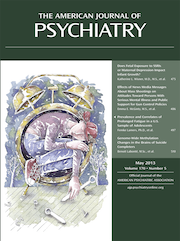There is an abundance of manualized approaches for specific diagnoses but a shortage of resources for the generalist psychotherapist whose complex patients rarely fit into any one category. Mentalizing—reflecting on mental states in one’s self and in others—has been identified as a natural human capacity and an integral part of any psychotherapy. Jon G. Allen’s Restoring Mentalizing in Attachment Relationships: Treating Trauma With Plain Old Therapy strives to integrate research and clinical practice to broaden the concept of mentalizing in trauma treatment. He broadly defines trauma as a consequence of mental pain experienced in psychological isolation and focuses specifically on attachment trauma, conceptualized as a defect of mentalizing.
Allen proves himself to be a rigorous scholar and a skilled therapist, as he makes a case for what he calls “plain old therapy,” a combination of philosophy, attachment theory, mentalizing, and mindfulness. Failure of mentalizing in attachment relationships lies at the core of abuse and neglect, as well as more insidious forms of trauma, leading to difficulty with emotional regulation. He identifies attachment issues as nonspecific risk factors for most types of psychiatric disorders and therefore concludes that mentalizing and plain old therapy are central to their treatment. The “plain old therapist” is curious, compassionate, and accepting as he or she collaborates in a mentalizing relationship with the patient to restore connections ruptured by attachment trauma.
The book is divided into two parts containing three chapters each. Part one, titled “Attachment Trauma and Psychiatric Disorders,” reviews attachment theory, mentalizing, mindfulness, posttraumatic stress disorder (PTSD), dissociative disorders, and complex PTSD. The author makes a case for a developmental understanding of trauma while providing a comprehensive but brief overview of the literature. Similarly, the second part, titled “Treatment and Healing,” begins with a review of evidence-based treatments for trauma-related disorders, including PTSD and borderline personality disorder. Allen respects the supporting science that has necessarily used diagnostic categories but advocates for a more developmental and individualized approach. As he describes common treatment modalities, he identifies the common threads between them to develop his concept of plain old therapy. He then applies the plain old therapy approach to depression, anxiety, eating disorders, self-injury, and beyond. He asserts, quite effectively, that all treatments with an evidence base are compatible with a mentalizing approach.
The final two chapters of the book offer a luminous integration of the evidence laid forth with the author’s experience and vision. In a voice that is dedicated, curious, and deeply human, Allen draws from his four decades of experience working with traumatized patients. His chapter titled “Plain Old Therapy” explicates his perspective and promotes therapy as a “skill in being human.” In the final chapter, he explores “existential-spiritual perspectives,” looking at the effects of trauma beyond psychiatric illness. He is unafraid to embrace what he knows through science, what experience has taught him, and what is unknowable.
Despite a folksy voice and the use of relatively simple language, this book seems primarily suited to the needs of professional readers. Therapists at all levels of experience will find the presentation refreshingly cohesive, although all are likely familiar with at least some aspects. This book may be especially helpful for trainees who find the prospect of learning so many specific treatment modalities daunting. This is a more accessible, less instructive complement to Handbook of Mentalizing in Mental Health Practice, edited by Fonagy and Bateman (to which Allen was a contributor). The case examples are clear and resonant, drawn largely from the author’s work with inpatients at the Menninger Clinic but are easily translatable to outpatient and less intensive practices.
Deceptively simple, this volume articulates complex but common clinical concerns with research, compassion, and common sense in a way that calls to mind an ideal therapist. My concept of trauma is changed from reading this book, and my view of my patients and my role in treating them is both more solid and more flexible. The reader will be left with much to think about and a renewed sense of hope in plain old therapy.

